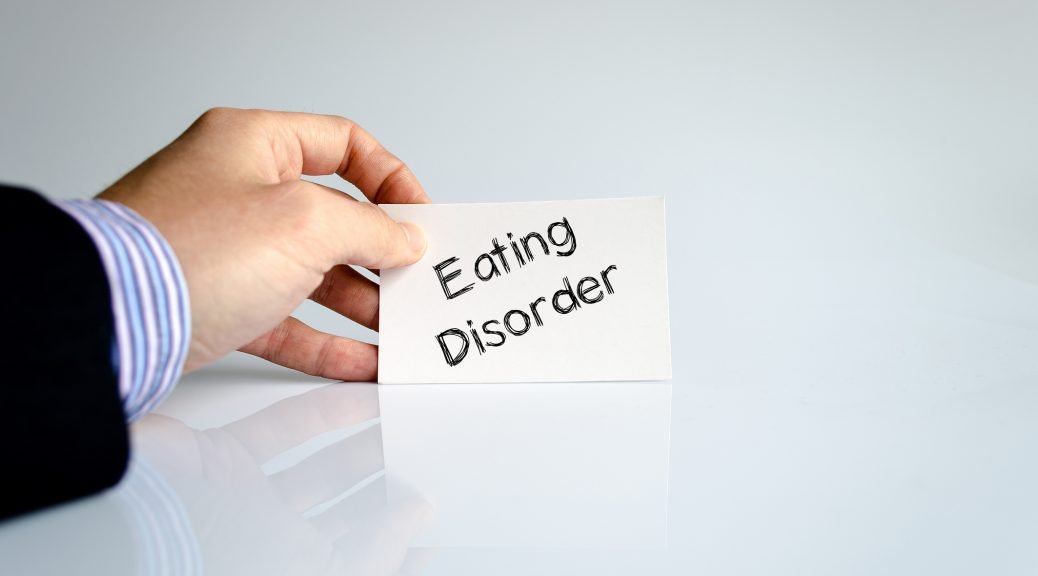Feeding disorders: Overview
Some of the more common feeding disorders in infants and young children include pica, rumination disorder, and avoidant/restrictive food intake disorder. These disorders can be very complex and difficult to treat. Successful feeding requires a nurturing relationship between the child and caregiver. Among individuals with feeding disorders, frequently a serious disruption has occurred, or some type of psychopathology has been found between the child and caregiver. The temperament of the child may also be a factor in the development of feeding difficulties. As in eating disorders, feeding disorders feature avoidant and restrictive food intake although unlike with eating disorders, feeding disorders usually are first identified in early childhood rather than in the adolescent years. Currently, prevalence rates for feeding disorders are not well defined.
Eating Disorders: Overview
Eating disorders in adolescents and adults are very similar to feeding disorders in children and infants in that they are very complex, multifaceted and difficult to treat. Also, like feeding disorders, eating disorders have a significant impact upon an individual’s daily functioning. Eating disorders affect a person’s diet in very significant, negative ways. The disorder can be manifested in various ways including eating either very small amounts or absolutely no food at all (NIMH, 2013). Disorders can affect every aspect of an individual’s life including their physical and emotional health as well as their relationships with others. The eating disorders described in this section include anorexia nervosa, bulimia nervosa and binge eating disorder.
Prevalence Rates and Risk of Eating Disorders:
It is believed that as many as 20 million women and possibly 10 million men have suffered from some type of eating disorder at some time in their lives. It is believed that the rates of eating disorder have increased since the 1950’s. The American Psychiatric Association (2013) concluded that the prevalence rates of eating disorders vary significantly, but as published in the DSM-5, the prevalence rate for anorexia nervosa is approximately 0. 4% among the general population and bulimia nervosa is 1% to 1.5% over a 12-month period of time.
Eating disorders are most often first identified in the adolescent years. Issues related to image, weight and body shape that seem to underlie eating disorders may possibly even begin at a much younger age with approximately 40% to 60% of elementary school girls identifying some concern for their body weight or of becoming fat.
Although eating disorders are more frequently seen in females, males may also be at risk. Most often, men with eating disorders are more focused on making their bodies larger and more muscular as opposed to women who seem to be more interested in making their bodies lighter and smaller.
Cause of Feeding Disorders:
Issues associated with feeding are common among infants and small children although not all of these problems result in feeding disorders. However, it is important to recognize that without intervention, sometimes these difficulties can result in a feeding disorder. The specific interventions require a recognition of developmental and medical causation which may then necessitate specific interventions by either parents, medical or mental health professionals.
Clinicians should consider the characteristics of both the children and caregivers interdependently rather than separately. It is especially important to look at maternal factors when considering the cause of feeding disorders in recognition of the fact that maternal depression, anxiety and other eating disorder symptoms in pregnancy have been found to predict feeding difficulties.
The temperament of the child is also very important. It has been found that many of the children with feeding difficulties seem to have a difficult temperament including displays of angry moods, temper tantrums and aggression.
Cause of Eating Disorders:
As with feeding disorders, eating disorders may be caused by a variety of biological, behavioral, genetic and psychological factors (NIMH, 2013). While some researchers seem to focus on cultural considerations among individuals with eating disorders, it is difficult to identify the relative level of socio-cultural considerations in the development of these disorders. It is imperative to consider eating disorders from a holistic perspective and recognize that the interaction between genetic factors, social and cultural factors such as media images determine their relative contributions.
Many clinicians and researchers focus more on the social and cultural aspects in that the beauty ideals of Western culture seem to overemphasize thinness among women, resulting in a higher level of risk in the development of an eating disorder. Although mainstream media seems to focus on the thinness ideal of media images possibly underlying anorexia nervosa, many people are exposed to these same images and do not develop eating disorders.
Feeding and Eating Disorders Treatment:
Because of the multifactorial social and psychological etiology of feeding and eating disorders which makes these disorders so difficult to treat, treatment also needs to be multi-dimensional in most cases. The specific treatment will be according to the specific presentation and individual, social, psychological, and interpersonal factors involved, with special attention to behavioral, physical and emotional health. Also, of consideration will be the necessary level of care, which can range from inpatient to residential to outpatient treatment. The specific treatment venue will frequently depend upon the severity and/or the presentation of the symptoms.
Because of the secretive nature of eating disorders, these disorders often severely isolate individuals and cause them to be very reluctant to see a therapist or talk to a doctor. It is very common among these patients to refuse treatment for their condition. Psychologists and mental health professionals need to focus on the development of an appropriate, supportive therapeutic relationship and help the individual to understand why treatment may be necessary.
Some of the more common therapeutic treatments for eating disorders are cognitive behavioral therapy, interpersonal psychotherapy and dialectical behavior therapy. Cognitive behavioral therapy is often used for people who experience anorexia and bulimia whereas interpersonal psychotherapy seems to be more effective for individuals battling binge eating. While dialectical behavior therapy has been used to treat various eating disorders, it is often used for patients who have tried other therapeutic interventions and have not been successful.
Special Concerns for Individuals with Eating Disorders:
It is of special concern for counselors and mental health clinicians treating individuals with eating disorders to consider the high level of mortality. The mortality rates of eating disorders may be as high as 4% for anorexia nervosa, 3.9% for bulimia nervosa and 5.2% for eating disorder NOS (Crow et al., 2009). Also due to the complex nature of eating disorders in both the development and treatment, counselors will most likely need to collaborate with various other treatment professionals including physicians, psychiatrists, dietitians and other medical professionals to assist with appropriate treatment.
Additional information related to the specific feeding and eating disorders follow below.
Feeding and Eating Disorders: DSM-5 Diagnostic Codes
The following specifiers apply to feeding and eating disorders where indicated:
Specify if: In Remission
Specify if: In partial remission, In full remission
Specify current severity: Mild, Moderate, Severe, Extreme
307.52 (___.__) Pica
(F98.3) In children
(F50.8) In adults
307.53 (F98.21) Rumination Disorder
307.59 (F50.8) Avoidant/Restrictive Food Intake Disorder
307.1 (___.__) Anorexia Nervosa
Specify whether:
(F50.01) Restricting Type
(F50.02) Binge-eating/purging type
307.51 (F50.2) Bulimia Nervosa
307.51 Binge-eating disorder
307.59 (F50.8) Other Specified Feeding or Eating Disorder
307.50 Unspecified Feeding or Eating disorder
Some information adapted by Paul Susic Ph.D. Licensed Psychologist from the following sources
References:
American Psychiatric Association (2013). Diagnostic and statistical manual of mental disorders (5th ed.). Arlington, VA: Author.
Crow, S. J., Peterson, C. B., Swanson, S. A., Raymond, N.C. Specker, S., Eckert, E. D., & Mitchell, J. E. (2009). Increased mortality in bulimia nervosa and other eating disorders. American Journal of Psychiatry, 166, 1342-1346.
National Institute of Mental Health. (2013). Eating disorders. Retrieved from http: //www.nimh.nih.gov/health/topics/eating-disorders/index.shtml



